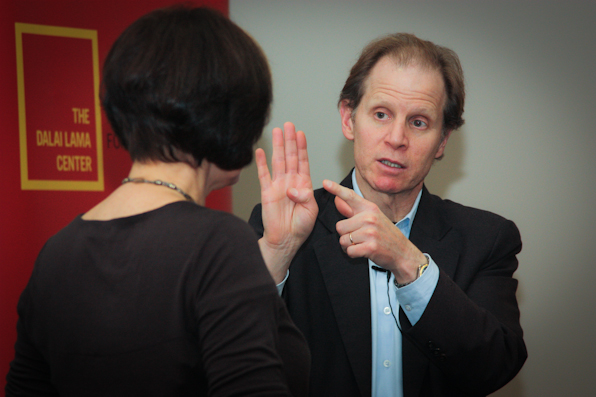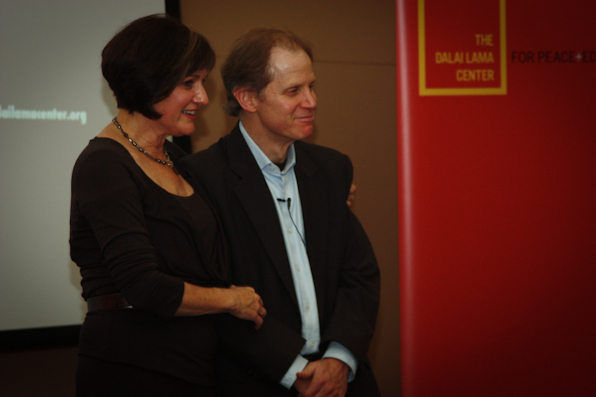Dan Siegel: Parenting in the 21st Century

Upstairs, downstairs.
Communication between these parts of the brain is what leads to a child's healthy mind, according to Dr. Dan Siegel, who spoke at the November 16 Speakers Series event "Parenting for the 21st Century: Building the Neural Circuits for Resilience and Kindness".
It sounds simple enough, but how does this work and how will it help parents better develop their children into resilient and kind human beings?

As Dr. Siegel explains it, we can think of our brain as a house, with a downstairs and an upstairs. The downstairs brain includes the areas responsible for basic functions (like breathing or blinking), impulses (like fight or flight), and emotions (like anger and fear).
Your upstairs brain, on the other hand, handles much more sophisticated brain functions. This is where complex processes take place, like thinking, imagining, and planning.
The distinction is important, says Dr. Siegel, when communicating with our children. If a source of trouble is coming from the downstairs brain, parents should respond differently then they would if it was coming from the upstairs brain.

To explain how the downstairs brain operates, Dr. Siegel used the example of a child being asked to attend a pool party. A shy boy tells his mother that he doesn't want to attend the pool party. Her first instinct might be to reassure him that it will be a fun time. But, as Dr. Siegel points out, the mother is trying to appeal to the child's upstairs brain when likely the problem is coming from the downstairs brain. The mother is using rational thought (providing assurance of fun at the pool party) trying to deal with a downstairs brain emotion (fear or shyness).
The solution? Name it to tame it. That's the term Dr. Siegel uses to describe how parents can help children handle downstairs brain processes. In the example of the shy boy and the pool party, the mother should have communicated to her child that she recognizes his fear and that it's okay to be afraid. Once the boy feels that they've connected on a downstairs level, then they can move on to the more complex levels of the upstairs brain.

Don't flip your lid. We've all heard this expression before. For Dr. Siegel, it aptly describes the relationship between the upstairs and downstairs brain. The upstairs brain should be a tool to regulate the downstairs brain. If the downstairs brain is allowed to run unchecked, it becomes separated from the upstairs brain and the result is that we literally "flip our lid".
The nurturing of a regulating upstairs brain is so important for children, says Dr. Siegel, because this part of the brain stops developing in our mid-twenties. Giving our children the tools to identify and handle their downstairs brain processes at a young age will set them up to succeed later in life.

It's all part of what Dr. Siegel calls "mindsight", our ability for our mind to see itself. When we can see how our mind works, including the connection between the upstairs and downstairs brains, we can start to see the minds of others through our relationships. This is what leads to empathy and then, in turn, to kindness.
For more from "Parenting for the 21st Century: Building the Neural Circuits for Resilience and Kindness", stay tuned for the complete video podcast. To learn more about mindsight, check out Dr. Siegel's last appearance in the Dalai Lama Center's Speakers Series, at "Mindsight: Brain Science and Transformation for You and Your Relationships".







Comments
Post new comment